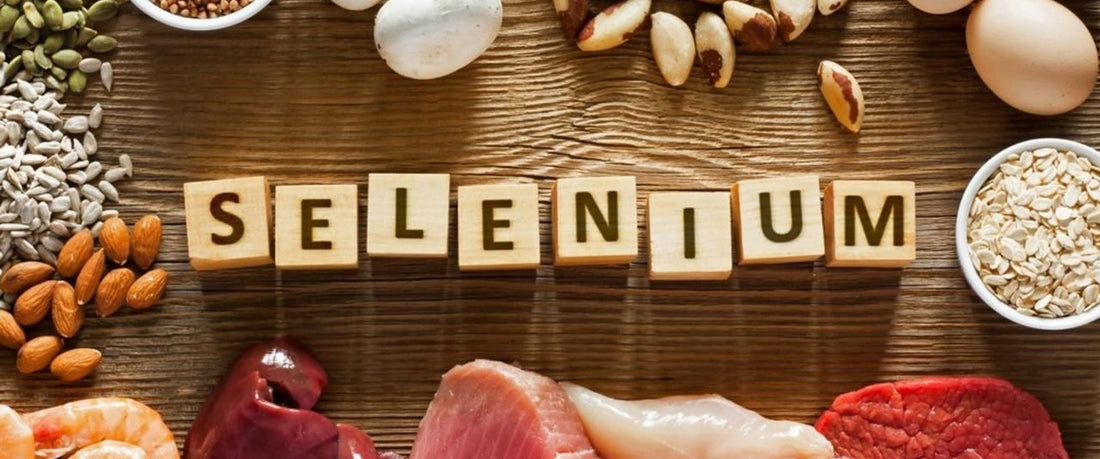
Trace Minerals, Big Jobs
- Trace elements—like iron, zinc, copper, manganese, iodine, and selenium—account for less than 0.01% of body weight, yet are essential to nearly every physiological process.
- Selenium, in particular, supports over 25 selenoproteins involved in antioxidant defense, immune balance, and metabolic regulation.
- In the liver, selenium plays a vital role in endogenous antioxidant systems that help maintain day-to-day function. Selenium deficiency may impair these defenses, leaving the liver more susceptible to oxidative stress.
In simple terms: Even tiny amounts of selenium matter—a lot—because they power the liver’s built-in defenses.
Antioxidant Defense in the Liver
Selenium supports the activity of key selenoprotein enzymes:
- Glutathione peroxidases (GPx): Reduce hydrogen peroxide and lipid hydroperoxides to limit oxidative damage to liver membranes and proteins.
- Thioredoxin reductases (TrxR): Maintain redox balance and support protein integrity and DNA repair.
In simple terms: Selenium powers GPx and TrxR—two enzyme systems that keep oxidative damage in check.
Inflammatory Pathways & Redox Balance
- Inflammation in the liver often involves NF-κB, a key pro-inflammatory pathway.
- Chronic triggers (e.g., alcohol, infections, lipid accumulation) can keep this pathway elevated, increasing cytokines like TNF-α, IL-1β, and IL-6.
- By supporting antioxidant enzymes, selenium may help limit upstream oxidative stress, indirectly reducing prolonged NF-κB activation.
In simple terms: Better redox control upstream may help keep the liver’s inflammatory signals from running too hot for too long.
Tuning Lipid Metabolism
1. Selenium influences transcription factors tied to liver fat metabolism:
- PPAR-α promotes fatty acid oxidation.
- SREBP-1c drives lipid synthesis.
2. Low selenium and weakened redox status can impair this balance—reducing fat burning and increasing lipid accumulation.
In simple terms: Adequate selenium helps the liver keep “burning” and “building” of fats in better balance.
Animal Evidence: Selenium × Glutathione Synergy
- In a chemically induced mouse model of liver injury, supplementation with glutathione (GSH), selenium (Se), or their combination was tested.
- Both nutrients individually reduced liver injury markers.
- The GSH + Se combination showed the greatest antioxidant capacity enhancement, suggesting a potential synergy.
In simple terms: Selenium helps on its own, and pairing it with GSH looked stronger in mice (mechanistic/animal data).
Long-View Takeaway
- Maintaining optimal selenium status over time may help support the liver’s ongoing resilience and metabolic balance.
In simple terms: Keep selenium sufficient to give your liver steady, long-term backup.
Safety Notes
This article is for educational purposes only and does not replace medical advice.
Always follow product labeling.
Speak to your healthcare provider before use if you are pregnant or nursing, managing a health condition, or taking medications.
FAQ
Q1: Why is selenium so closely linked to liver wellness?
A: Selenium supports GPx and TrxR enzymes, which reduce oxidative stress, maintain protein integrity, and assist in cellular repair—all crucial for the liver.
Q2: Does selenium help with inflammation?
A: Yes. By reducing oxidative stress, selenium indirectly helps prevent overactivation of inflammatory pathways like NF-κB, maintaining balance in cytokine production.
Q3: Is “more selenium” always better?
A: No. Selenium works best when intake is adequate—not excessive. Follow your product’s directions or consult a healthcare professional.
References
1. Sadauskienė, I., Liekis, A., Kasauskas, A., et al. (2020). Effects of long-term supplementation with aluminium or selenium on the activities of antioxidant enzymes in mouse brain and liver. Catalysts, 10(5), 585. https://doi.org/10.3390/catal10050585
2. Xu, L., Lu, Y., Wang, N., & Feng, Y. (2022). The role and mechanisms of selenium supplementation on fatty liver–associated disorder. Antioxidants, 11(5), 922. https://doi.org/10.3390/antiox11050922
3. Hsiao, Y.-F., Huang, S.-C., Cheng, S.-B., Hsu, C.-C., & Huang, Y.-C. (2024). Glutathione and selenium supplementation attenuates liver injury in diethylnitrosamine-induced liver-injury mouse model by enhancing glutathione-related antioxidant capacities. International Journal of Molecular Sciences, 25(21), 11339. https://doi.org/10.3390/ijms252111339
These statements have not been evaluated by the Food and Drug Administration. This product is not intended to diagnose, treat, cure, or prevent any disease.
Results may vary by individual. The information on this site is for general educational purposes and is not a substitute for medical advice.